01.05.2021
The gigantic Stratolaunch aircraft has flown for the second time in two years
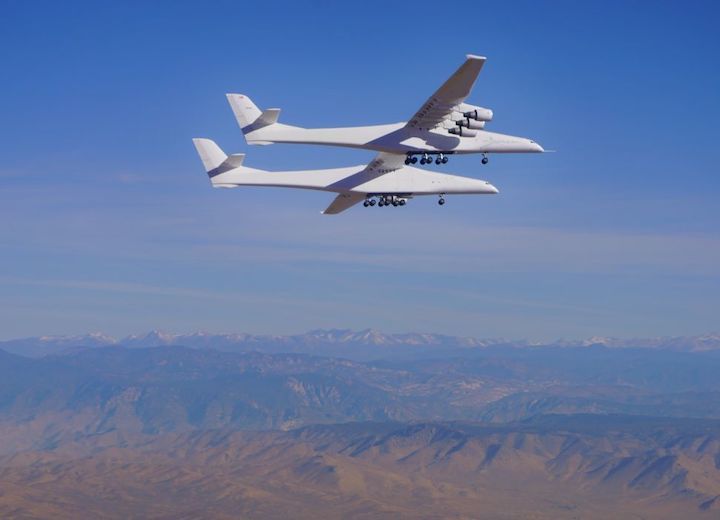
MOJAVE, Calif. -- The gigantic Stratolaunch aircraft flew Thursday for its second time, taking to the skies over the Southern California desert
The six-engine jet with the world’s longest wingspan took off from Mojave Air and Space Port two years after its maiden flight, following a change in ownership and purpose.
“We are airborne,” the Stratolaunch company tweeted at about 7:30 a.m.
The behemoth safely touched down on its 28 wheels about three hours later and Stratolaunch called the flight test a success.
Named Roc, the twin-fuselage aircraft has a wingspan of 385 feet (117 meters). It was developed by Microsoft co-founder Paul G. Allen, who died just months before it flew for the first time in April 2019.
Allen intended to use it as a carrier aircraft for space launches, carrying satellite-laden rockets beneath the center of the wing and releasing them at high altitude.
The new owners initially plan to use it as a carrier aircraft for launches of reusable hypersonic flight research vehicles.
Hypersonic describes flights at speeds of at least Mach 5, or five times the speed of sound.
Quelle: abcNews
+++
IT’S ALIVE! Stratolaunch’s Roc Aircraft Flies for First Time in 2 Years
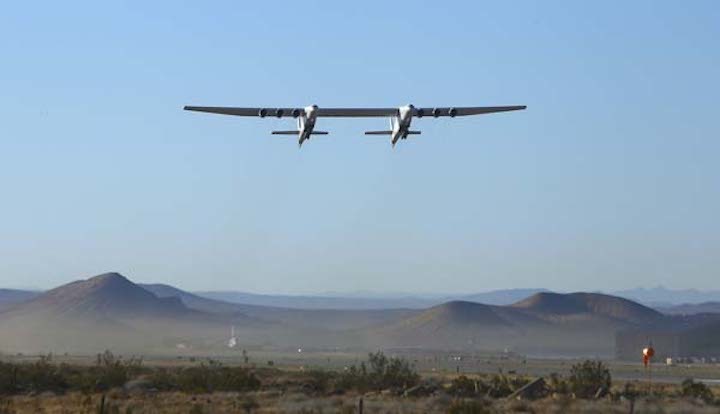
For the first time in 2 years 16 days, Stratolaunch’s massive Roc aircraft roared down the runway at the Mojave Air and Space Port in California and soared into in clear blue sky on only its second ever flight test.
Roc took off at 7:31 a.m. PDT time, trailing a giant cloud of dust stirred up by its six jet engines and giant 385-ft long wings that hung out over the desert scrub brush. The aircraft flew over the Mojave Desert for more than three hours as a crowd that had gathered for takeoff watched.
Roc made two low passes over the runway before touching down on its third approach after a flight that lasted 3 hours 14 minutes. The airplane’s maiden test flight in 2019 lasted 2 hour 29 minute.
Stratolaunch Chief Operating Officer Zachary Krevor declared the flight test to be an “extremely successful” one that accomplished all its objectives. Engineers were happy with the condition of the aircraft after it landed, he said.
A source who insisted on anonymity told Parabolic Arc that the flight tested out a number of modifications made to Roc since the first flight test. Engineers installed a yaw damper to address the aircraft’s susceptibility to Dutch roll. Wikipedia describes the problem as “a type of aircraft motion consisting of an out-of-phase combination of ‘tail-wagging’ (yaw) and rocking from side to side (roll).” Stratolaunch has two enormous tails.
Roc’s flight followed two attempts last week that were scrubbed due to high winds. This time, the winds were calm enough to allow for takeoff and landing.
The successful flight test bodes well for the company’s plans to launch hypersonic test vehicles and eventually an orbital space plane from under the giant wing that connects the dual fuselages.
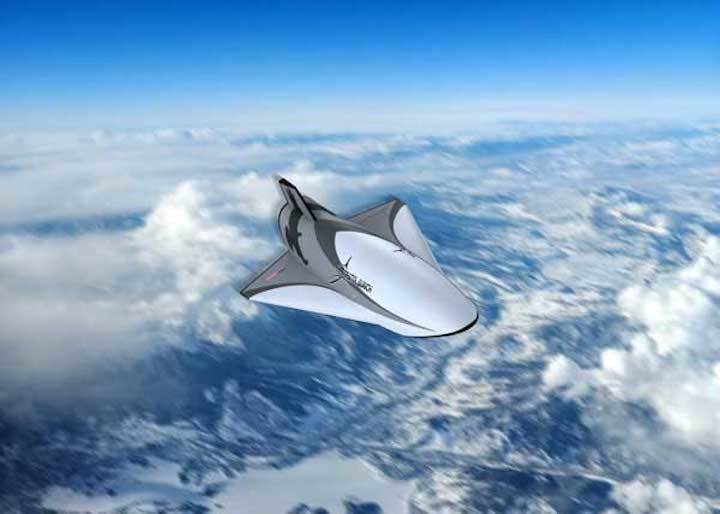
Stratolaunch is developing the reusable hypersonic Talon A vehicle, which will be capable of flying at speeds between Mach 5 to March 7. The 28-foot long vehicle will have a wingspan of 11.3 feet and a launch weight of approximately 6,000 lbs.
The company is also planning a larger hypersonic test vehicle called Talon Z, and a Black Ice space plane capable of taking cargo and possibly people into orbit.
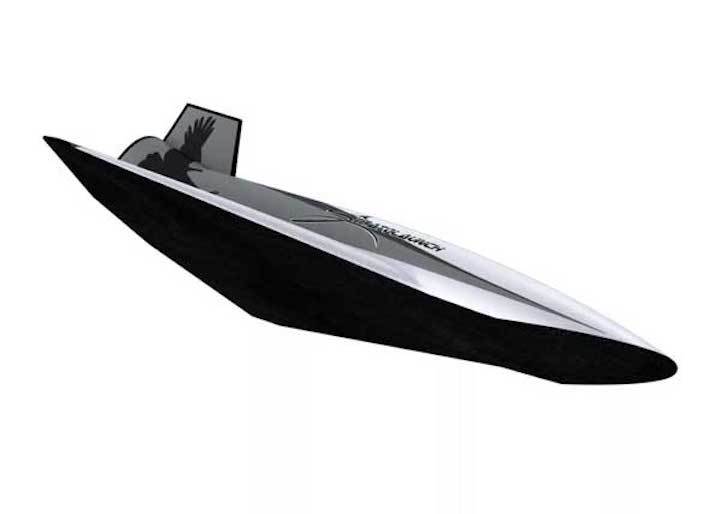
The company’s focus on hypersonic test vehicles marks a significant change from the original purpose of Roc. The aircraft was originally conceived by Scaled Composites founder Burt Rutan and Microsoft co-founder Paul Allen as a launch platform for a medium rocket that would send satellites and human space vehicles into Earth orbit. The pair unveiled the project publicly in December 2011 after about a year in stealth mode.
While development of Roc progressed, Stratolaunch struggled for much of the 2010’s to find a launch vehicle suitable for the giant aircraft. Partnerships with SpaceX and Orbital ATK ended without any hardware being produced. A deal with Firefly Space Systems also fell through.
Stratolaunch purchased two of Orbital ATK Pegasus XL small-satellite rockets to fly while the company embarked upon a project to develop its own fleet of launch vehicles. Neither plan would bear fruit.
In October 2018, Stratolaunch suffered a major blow as Allen lost his battle with non-Hodgkin’s lymphoma at the age of 65 without ever having seen Roc fly. The decision about what to do with Stratolaunch and the rest of Allen’s vast estate fell to his sister, Jody Allen, who was reportedly not interested in her brother’s space projects.
Stratolaunch conducted Roc’s maiden flight test in April 2019. The company shut down at the end of the following month, and put itself up for sale at a reported price of $400 million.
In October 2019, Stratolaunch was sold to Cerberus Capital Management, a company that specializes in purchasing distressed companies. No sales price was announced, but a source said Cerberus paid $300 million. Stratolaunch had spent $900 million getting to the first flight in April 2019, the source added.
Quelle: PARABOLIC ARC
+++
Stratolaunch aircraft returns to the skies after two-year hiatus
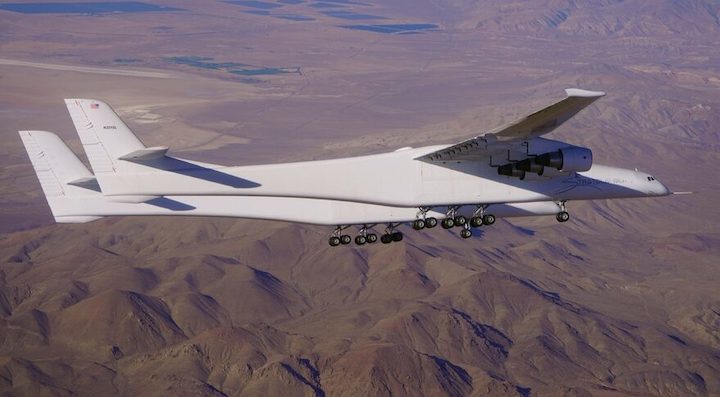
WASHINGTON — Stratolaunch flew its giant aircraft for the first time in more than two years April 29, marking the start of a new test flight campaign to prepare the plane to serve as a platform for hypersonic vehicles.
The aircraft, nicknamed Roc, took off from the Mojave Air and Space Port in California at 10:28 a.m. Eastern, landing back at the airport three hours and 14 minutes later. The plane achieved a maximum altitude of nearly 4,300 meters and top speed of 320 kilometers per hours during the flight.
“Today’s flight was very successful. We accomplished all of our test objectives,” Zachary Krevor, chief operating officer of Stratolaunch, said in a call with reporters after the flight. “We have not seen anything anomalous, and we are very pleased with the condition of the aircraft upon landing.”
The flight was the first since the plane’s inaugural flight in April 2019, also in Mojave. Since then, the company, established by the late Microsoft co-founder Paul Allen, was sold to a private equity group, Cerebus. Under that new ownership, Stratolaunch has shifted direction from being a launch services provider, using the plane as a platform for an air-launch system, to using it to support hypersonic testing using a vehicle it is developing called Talon-A.
The company also used the time to upgrade the aircraft. Those changes, Krevor said, include a new environmental control system, additional instruments and “increasing the robustness” of the plane’s flight control system intended to improve its handling qualities.
This flight marks the beginning of a flight test campaign expected to continue through the next year. “Over the next year, the airplane will go higher, it will go faster, until we are in the envelope that’s required to drop our Talon testbed so it can achieve hypersonic flight,” said Daniel Millman, chief technical officer of Stratolaunch.
Krevor said that test campaign will include a “range of flights” with increasing complexity, but declined to say how many flights were planned. “The exact number of flights will be dependent on how we are able to complete the test objectives of each flight,” he said.
In parallel to that flight test program, Stratolaunch is working on prototypes of its Talon-A hypersonic vehicle. That includes a “separation test article” that will be flown on the aircraft early next year and dropped to test the safe separation of Talon from the plane.
That will be followed by the first powered Talon test vehicle. “Early next year we’re going to go hypersonic with an expendable vehicle to expand the envelope,” Millman said. That will be followed by reusable vehicles that will land on a runway and can be reflown up to 25 times.
Millman said Stratolaunch is currently testing Hadley, a 5,000-pounds-force engine from Ursa Major Technologies, for use on Talon-A. “We’ll be running it on a test stand, making sure the propulsion and integration is what we expect it to be before we start putting it on the vehicle,” he said.
Stratolaunch is looking to offer its vehicle system to the Defense Department to test hypersonic technologies. “One of the areas that we’re looking at is how can we help the Department of Defense in mitigating risk for a lot of their expensive flight testing,” he said. “What we’re doing is providing a path for them to test a lot of their technologies in a simpler way, a repeatable way, a reusable way.”
Quelle: SN

